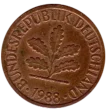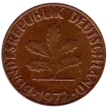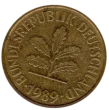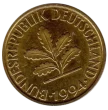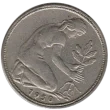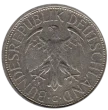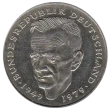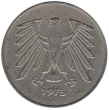Exchange your Deutsche Marks
Do you have leftover Deutsche Marks? We offer a fast and easy way to exchange both current and withdrawn Deutsche Mark banknotes and coins. Convert them into your local currency today with our quick and hassle-free exchange service.
DEM
The Deutsche Mark was replaced by the Euro in 2002, marking Germany’s full integration into the Eurozone.
Deutsche Marks Information
The Deutsche Mark (DEM) was the official currency of Germany from 1948 until 2002, when it was replaced by the Euro as part of Germany’s integration into the European Monetary Union. The Deutsche Mark played a crucial role in the country’s post-World War II recovery and its emergence as an economic powerhouse in Europe. For many Germans, the Deutsche Mark became a symbol of the country’s economic strength, stability, and post-war identity.
The Deutsche Mark was introduced in West Germany in 1948, replacing the Reichsmark, which had suffered from hyperinflation and had lost much of its value after the war. The introduction of the Deutsche Mark was part of a broader currency reform implemented by the Allied powers and the German government to stabilise the economy and curb inflation. The reform was highly successful, and the Deutsche Mark quickly became one of the world’s most stable and respected currencies.
The Deutsche Mark was subdivided into 100 pfennigs, and the currency was issued in both coins and banknotes. Coins were available in denominations of 1, 2, 5, 10, and 50 pfennigs, as well as 1, 2, and 5 marks. Banknotes were issued in denominations of 5, 10, 20, 50, 100, 200, 500, and 1,000 marks. The designs on Deutsche Mark banknotes often featured prominent German figures from science, literature, and the arts, as well as national symbols that reflected Germany’s cultural heritage.
One of the key features of the Deutsche Mark was its role in Germany’s post-war economic miracle, known as the “Wirtschaftswunder.” Under the leadership of Chancellor Konrad Adenauer and Finance Minister Ludwig Erhard, West Germany implemented a series of economic reforms that promoted free-market capitalism and rapid industrial growth. The stability of the Deutsche Mark was central to this recovery, as it provided a solid foundation for economic expansion and investment.
The Deutsche Mark continued to serve as the currency of West Germany throughout the Cold War, while East Germany used the East German mark (Mark der DDR). When Germany was reunified in 1990, the Deutsche Mark was adopted as the official currency of the newly united Germany. The conversion of East German marks to Deutsche Marks was a key aspect of the reunification process, helping to integrate the economies of the two formerly separate states.
In 1999, Germany became one of the founding members of the Eurozone, and the Deutsche Mark was replaced by the Euro for electronic transactions. However, Deutsche Mark banknotes and coins remained in circulation until 2002, when the Euro officially replaced the Deutsche Mark as Germany’s sole currency. The exchange rate was fixed at 1.95583 DEM to 1 EUR, and the transition to the Euro was seen as a significant milestone in Germany’s integration into the European Union.
Although the Deutsche Mark is no longer in use, it remains a symbol of Germany’s post-war recovery and economic success. Many Germans still hold a deep attachment to the currency, and Deutsche Mark banknotes and coins are now sought-after collectibles.
In conclusion, the Deutsche Mark was the official currency of Germany from 1948 to 2002. It played a vital role in the country’s post-war recovery and economic development and remains an important part of Germany’s financial history.

